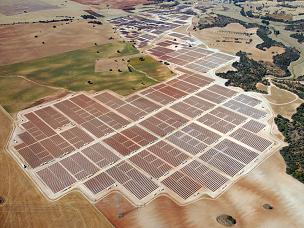Growth of Renewables Transforms Global Energy Picture
http://stanford.wellsphere.com/green-living-article/growth-of-renewables-transforms-global-energy-picture/671595
Growth of Renewables Transforms Global Energy Picture
Posted May 13 2009 10:35pm
In 2008 for the first time, more renewable energy than conventional power capacity was added in both the European Union and United States, showing a “fundamental transition” of the world’s energy markets towards renewable energy, finds a report released today by REN21, a global renewable energy policy network based in Paris.
 Global power capacity from new renewable energy sources in 2008 was up 16 percent over the world’s 2007 capacity from new renewable sources, the REN21 Renewables Global Status Report shows.
Global power capacity from new renewable energy sources in 2008 was up 16 percent over the world’s 2007 capacity from new renewable sources, the REN21 Renewables Global Status Report shows.
“This fourth edition of REN21’s renewable energy report comes in the midst of an historic and global economic crisis,” says Mohamed El-Ashry, chairman of REN21.
“Although the future is unclear, there is much in the report for optimism,” said El-Ashry, an Egyptian national who from 1991 to 2003 served as the first CEO of the Global Environment Facility, which provides grants to developing countries for environmental projects.
Today, at least 73 countries have renewable energy policy targets, up from 66 at the end of 2007. At least 64 countries now have some type of policy to promote renewable power generation.
Companies are devoting an increasing amount of capital to renewables. By August 2008, at least 160 publicly traded renewable energy companies worldwide had a market capitalization greater than $100 million, the report shows.
Globally in 2008, solar heating capacity increased by 15 percent, while biodiesel and ethanol production both increased by 34 percent.
China’s total wind power capacity doubled in 2008 for the fifth year running, and developing countries, particularly China and India, are increasingly playing major roles in both the manufacture and installation of renewable energy, the report shows.
“The recent growth of the sector has surpassed all predictions, even those made by the industry itself,” says El-Ashry. He attributed much of this growth to more favorable policies amidst increasing concerns about climate change and energy security.
In 2008, renewable energy resisted the credit crunch more successfully than many other sectors for much of the year and new investment reached $120 billion, up 16 percent over 2007. However, by the end of the year, the impact of the crisis was beginning to show.
In his remarks accompanying release of the REN21 report, El-Ashry stressed that “now is not the time to relax policies that support a global, expanding renewable energy sector.”
“By maintaining and expanding these policies, governments, industry and society will reap substantial economic and environmental rewards when the economic rebound requires energy markets to meet rapidly increasing demand,” he advised.
The report notes that in response to the financial crisis, several governments have directed economic stimulus funding towards the new green jobs the renewable energy sector can provide, including the U.S. package that will invest $150 billion over 10 years in renewable energy.
Global wind power capacity grew by 29 percent in 2008 to reach 121 gigawatts, or more than double the capacity in place at the end of 2005.
Grid-connected solar photovoltaic power continued to be the fastest growing power generation technology, with a 70 percent increase in existing capacity to reach 13 gigawatts.
Spain became the solar photovoltaic market leader, with 2.6 gigawatts of new grid-tied installations. The concentrating solar power industry saw many new entrants and new manufacturing facilities in 2008.
Solar hot water in Germany set record growth in 2008, with over 200,000 systems installed.
India emerged in 2008 as a major producer of solar photovoltaics, with new policies leading to $18 billion in new manufacturing investment plans or proposals.
Geothermal power capacity surpassed 10 gigawatts in 2008, led by the United States. Direct geothermal energy delivered by ground source heat pumps is now used in at least 76 countries.
Among the many new renewable energy targets set in 2008, Australia targeted 45 terawatt-hours of electricity by 2020.
Brazil’s energy plan sought to slightly increase through 2030 its existing share of primary energy from renewable energy (46 percent in 2007), and its electricity share (87 percent in 2007).
India increased its target to 14 gigawatts of new renewables capacity by 2012.
Japan set new targets for 14 gigawatts of solar photovoltaic capacity by 2020 and 53 gigawatts by 2030.
The EU formally adopted its target to reach a 20 percent share of renewable energy in final consumption by 2020, setting also country-specific targets for all member states.
Feed-in tariffs were adopted at the national level in at least five countries for the first time in 2008 and early 2009, including Kenya, the Philippines, Poland, South Africa, and Ukraine.
The report also shows that several hundred cities and local governments around the world are planning or implementing renewable energy policies and planning frameworks linked to carbon dioxide emissions reduction.
